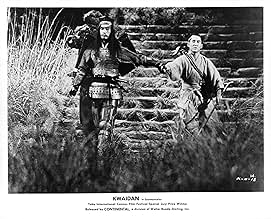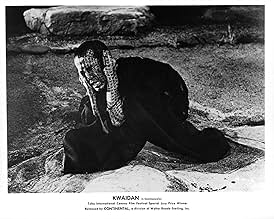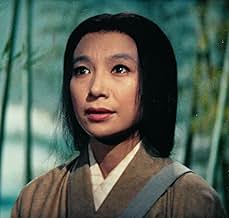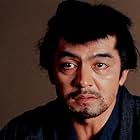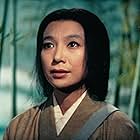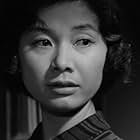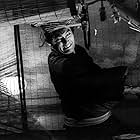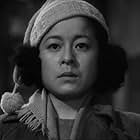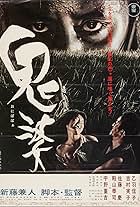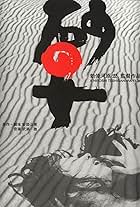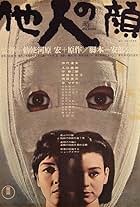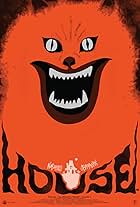A collection of four Japanese folk tales with supernatural themes.A collection of four Japanese folk tales with supernatural themes.A collection of four Japanese folk tales with supernatural themes.
- Nominated for 1 Oscar
- 5 wins & 2 nominations total
- Director
- Writers
- All cast & crew
- Production, box office & more at IMDbPro
Storyline
Did you know
- TriviaThe four vignettes were chosen to represent the four seasons of the year.
- GoofsIn the segment "Miminashi Hôichi no hanashi", Donkai says he covered all of Hôichi's body with the sacred writing, but when Hôichi is writhing on the floor after the ghost's attack, his thighs (which in the shots were supposed to be covered by his robe) are visible for a couple of seconds and are clearly unmarked.
- Quotes
Hoichi (segment "Miminashi Hôichi no hanashi"): As long as I live, I'll continue to play the biwa. I'll play with all my soul to mourn those thousands of spirits who burn with bitter hatred.
- Alternate versionsOriginally a four-episode anthology released in Japan at 183 minutes. The USA version removes the second episode, starring Keiko Kishi and Tatsuya Nakadai, in order to shorten the running time to 125 minutes.
- ConnectionsEdited into Spisok korabley (2008)
Featured review
Kwaidan is a four-segment horror anthology but you'd be hard pressed to find one more removed from the typical plastic bats and cobwebs Gothic anthologies of Amicus or Hammer. While it can be billed as a "horror" movie and it deals with the supernatural, it's not really frightening. All four segments are more like traditional Japanese folk legends about ghosts, the kind of spooky stories you could hear an elder narrating to kids around a bonfire in a village near Kyoto or the outskirts of Okinawa. However if "work of art" was a genre, Kwaidan would be among the best it had to offer.
Just two years after the seminal Seppuku which was done in stark black and white with a geometric, well disciplined style, Kobayashi returns with another tour-de-force, this time in extravagant, expressionistic colour. A visual feast proving that in the right hands style can be substance. His camera with its slow tracking shots is like a brush, painting a celluloid canvas with vivid, lush compositions and it comes as no surprise to find out that he had a background in painting. The combination of eerie, supernatural material, the dreamlike atmosphere and the use of colour in lighting and sets reminded me of the great Italian maestro, Mario Bava; although Kwaidan by no means fits in the Gothic horror mold.
Conscious of the folk legend material he's working on, Kobaysi wisely shot the movie in studio sets using large painted backgrounds that look deliberately artificial as much as they look gorgeous. In many ways, it feels like a big stageplay or an elaborate dramatic poem. In that aspect, Kwaidan takes place somewhere between the real and the mythic. A land of some other order.
The stories all revolve around ghosts and are as simple and predictable as any spooky story that you might hear as an adult. But they do a great job of providing an eerie skeleton for Kobayashi to hang on his beautiful style. Style over substance one could argue. Isn't that an erroneous statement though? By making the distinction one implies that style is somehow insubstantial to a film, something that couldn't be further from the truth. The use of colour is incredible, the lighting, at times subtle and evocative or wild and expressionistic, the slow tracking shots, long stretches of silence, a body painted with holy text, Tatsuya Nakadai looking calm and happy for a change, Tetsuro Tamba in full plate samurai armor, white ghastly faces, bodies falling in blood-red waters, a painted sunset backdrop, an intelligent play on vague endings, the minimal score, chords echoing from somewhere. Kwaidan proves that style IS substance. A visual feast by all means.
It's really a shame that Kobayashi is not as widely celebrated as Akira Kurosawa. Kwaidan is just another in a series of absolutely brilliant films he did in the 60's. Beautiful, creepy, poetic, atmospheric as hell; it is the work of a master cinematician and one of the best Japanese movies you're likely to see.
Just two years after the seminal Seppuku which was done in stark black and white with a geometric, well disciplined style, Kobayashi returns with another tour-de-force, this time in extravagant, expressionistic colour. A visual feast proving that in the right hands style can be substance. His camera with its slow tracking shots is like a brush, painting a celluloid canvas with vivid, lush compositions and it comes as no surprise to find out that he had a background in painting. The combination of eerie, supernatural material, the dreamlike atmosphere and the use of colour in lighting and sets reminded me of the great Italian maestro, Mario Bava; although Kwaidan by no means fits in the Gothic horror mold.
Conscious of the folk legend material he's working on, Kobaysi wisely shot the movie in studio sets using large painted backgrounds that look deliberately artificial as much as they look gorgeous. In many ways, it feels like a big stageplay or an elaborate dramatic poem. In that aspect, Kwaidan takes place somewhere between the real and the mythic. A land of some other order.
The stories all revolve around ghosts and are as simple and predictable as any spooky story that you might hear as an adult. But they do a great job of providing an eerie skeleton for Kobayashi to hang on his beautiful style. Style over substance one could argue. Isn't that an erroneous statement though? By making the distinction one implies that style is somehow insubstantial to a film, something that couldn't be further from the truth. The use of colour is incredible, the lighting, at times subtle and evocative or wild and expressionistic, the slow tracking shots, long stretches of silence, a body painted with holy text, Tatsuya Nakadai looking calm and happy for a change, Tetsuro Tamba in full plate samurai armor, white ghastly faces, bodies falling in blood-red waters, a painted sunset backdrop, an intelligent play on vague endings, the minimal score, chords echoing from somewhere. Kwaidan proves that style IS substance. A visual feast by all means.
It's really a shame that Kobayashi is not as widely celebrated as Akira Kurosawa. Kwaidan is just another in a series of absolutely brilliant films he did in the 60's. Beautiful, creepy, poetic, atmospheric as hell; it is the work of a master cinematician and one of the best Japanese movies you're likely to see.
- chaos-rampant
- Jul 3, 2008
- Permalink
- How long is Kwaidan?Powered by Alexa
Details
Box office
- Budget
- ¥350,000,000 (estimated)
- Runtime3 hours 3 minutes
- Aspect ratio
- 2.35 : 1
Contribute to this page
Suggest an edit or add missing content



